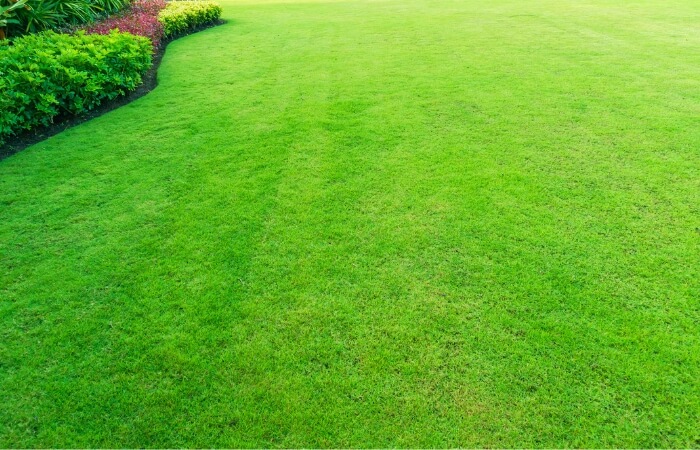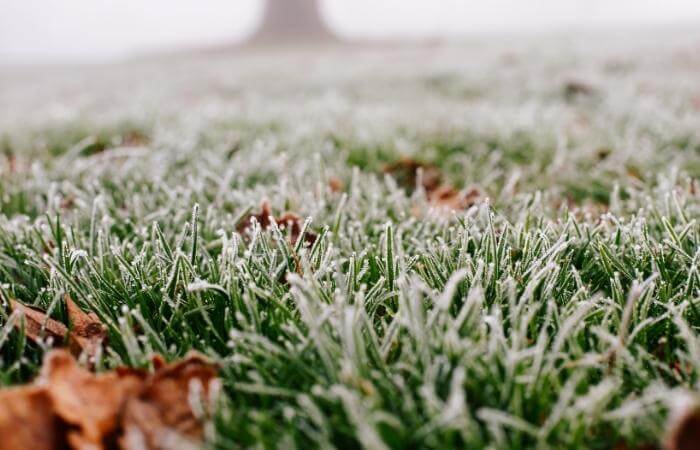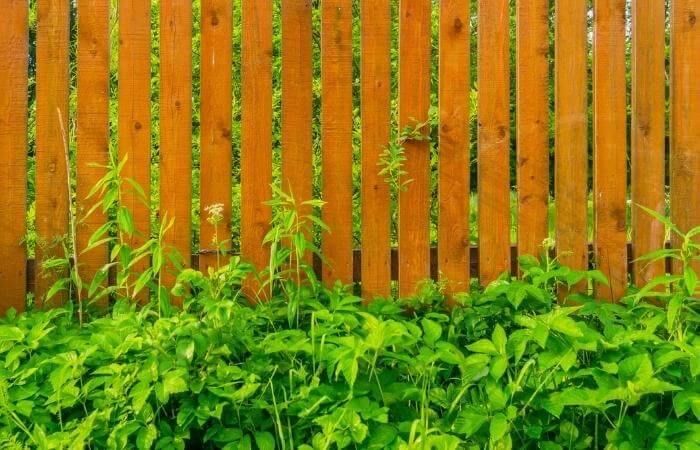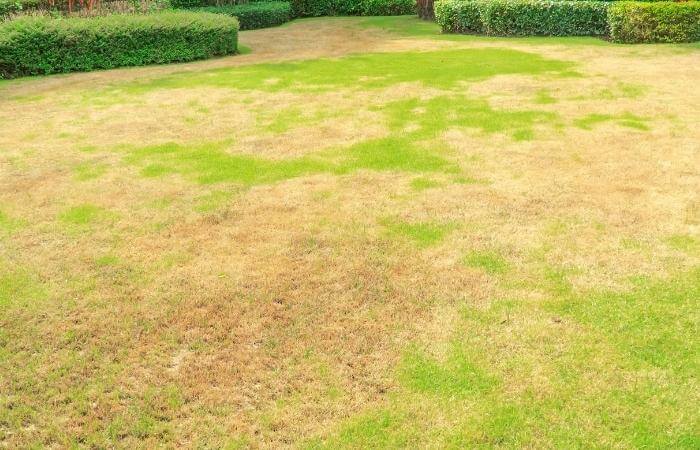Are you like me and have a love/hate relationship with dandelions?
While the bright yellow flowers bring color and a bit of joy to your yard, knowing how hard this pesky plant is to eradicate also brings aggravation.
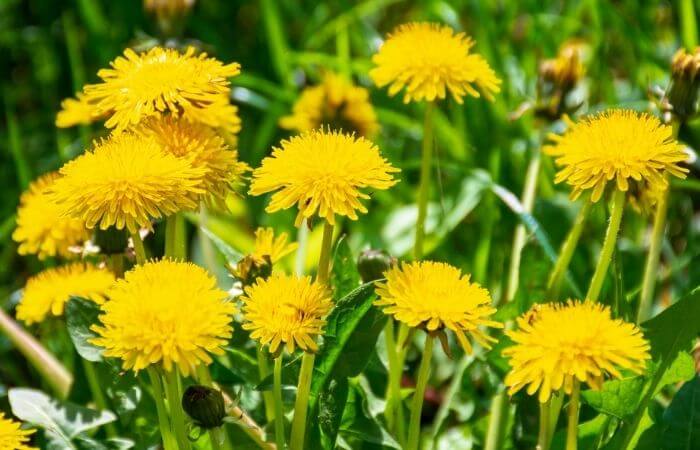
So the question is, “Are dandelions bad for your yard?” To answer that question and many more, I put together this dandelion fact guide.
By sticking around and reading all about dandelions, you can decide for yourself whether you want to beat ’em or join ’em at your home!
Why Are Dandelions Bad?
Aesthetically, people consider dandelions to be bad because they interfere with an otherwise blemish-free lawn that takes a lot of time and hard work to achieve.
Mowing a lawn with dandelions and cutting off the blooms before they make seeds balls can help slow the spread of dandelions.
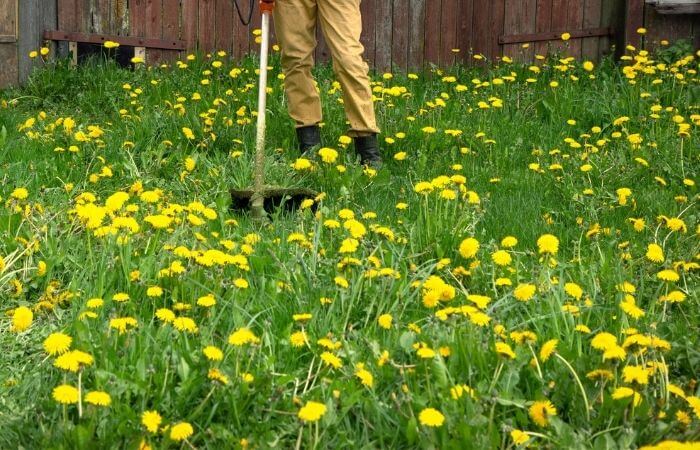
Now, to be fair, dandelions do cause issues. In turfgrass, dandelion plants form hard clumps that can trip up footing and can be a problem when they grow on golf courses or athletic fields.
When dandelions are left unchecked inside planter beds, they can grow so fast and dense that they can crowd out the original plants you want for their ornamental beauty.
Some people are allergic to dandelions. Those who have a sensitivity to other plants such as ragweed, marigolds, yarrow, chrysanthemums, or feverfew need to avoid dandelions, especially the root that seems to hold the most ability to irritate.
Another little understood fact is that dandelions contain iodine and also latex, which is that white substance the oozes from inside a stem after you pick a bloom. If you have allergies to either one of these substances, dandelions can be bad for your yard.
Where Do Dandelions Come From?
Dandelions, whose scientific name is Taraxacum officinale, is part of the Sunflower family of plants.
Dandelion origins are traced back to Eurasia, with new settlers bringing the plant to places like North and South America, Australia, and New Zealand, where the plant did not occur naturally.
Many believe the plant came to new lands for use as a medicine and not a by-product of unintentional contamination. Other historians believe settlers planted dandelions to prevent scurvy since the greens provide a high amount of vitamin C.
Across North America, you can find many species of what is known as “False Dandelions” that display different leaves but a very similar flower color and shape. This flower design is quite common on most plants in the Cichoriaceae family, which is a group of plants also considered “weeds” in some areas.
Depending on your geographic location, expect to hear the plant being called lion’s tooth, blowball, priest’s crown, milk witch, swine snout, or witch’s gown. Dandelions are now considered one of the most common plants on earth.
What Are The Parts Of A Dandelion?
Each flower on a dandelion consists of these parts:
- Ovary (seed)
- Pappus
- Lingule
- Anther
- Style
- Bilobed stigma
Dandelions have a root and leaves, then later form a stem and flower followed by a collection of mature seeds.
The root of the dandelion grows below ground, with one large and long taproot, with several tiny hair roots that absorb nutrients from the soil.
The leaves of a dandelion tend to be longer, with jagged sections “missing” along the center that makes it easily identifiable. The leaves of dandelions are critical because dandelion plants are photoautotrophs.
Photoautotroph plants are able to produce their food employing photosynthesis by using the sun and carbon dioxide to make an energy source to keep growing.
The stems of dandelions form and grow quickly as the flower forms and turns to seed.
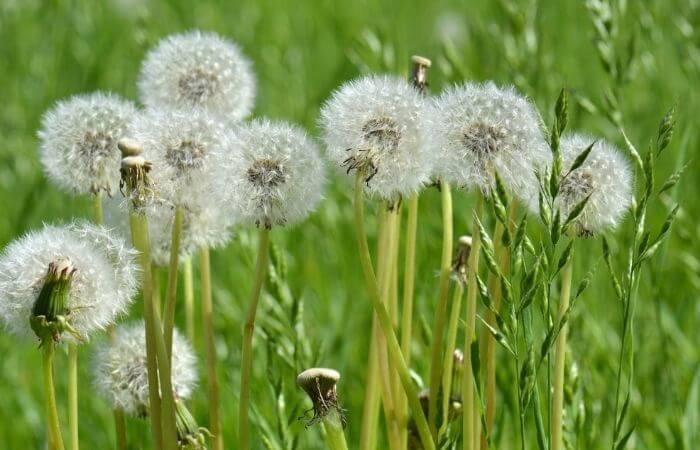
The most interesting fact about the dandelion flower is that the yellow part we consider a single flower is actually a collection of many individual flowers held together by the involucre or greenish-white bottom section of the head.
The seeds of the dandelion are part of the flower anatomy.
Is A Dandelion A Flower?
Yes, a dandelion is technically a flower.
A dandelion is a member of the Asteraceae or Compositae family, which are known to most of us as forms of wildflowers such as daisies, sunflowers, or asters. This family incorporates a large number of flowering plants that bloom up to hundreds of tiny flowers that are so tightly packed they appear as one flower.
The dandelion is a perennial flower that falls into the Taraxacum species, a large genus of plants within the Asteraceae family.
Because the dandelion is edible and has medicinal properties, some people consider the plant an herb.
The brightness of the yellow dandelion flower is quite striking and can be very attractive when grown as a groundcover over large areas. The vibrant green foliage is also pleasant to the eye.
Many gardeners going for a more natural look are turning to dandelions for not only their hardy growth and consistent flowering but for their deep root systems that can help prevent soil erosion, especially on hilly terrain.
Are Dandelions Weeds?
When it comes to plants, a weed is in the eye of the beholder. The much-maligned dandelion is deemed a weed in modern times but is only a tenacious flower.
Homeowners of today strive to have yards full of thick green grass without any imperfections to ruin the look. Unfortunately, dandelion flowers and seed pods stand out boldly against an otherwise clean expanse of lawn.
If a plant is bothersome, most people will refer to it as a weed. Dandelions may spoil the look of your yard, but federal agencies do not include them on their list of invasive species, which would officially make them a “weed.”
Dandelions are now growing across the USA, in all regions, from mountains to deserts to prairies. You will not find the dandelion on the USDA’s Federal Noxious Weed List, but you may be surprised to see other plants you consider “flowers” on there like the Benghal dayflower.
Go back in history just a century or so, and you’ll discover that having dandelions on your property was something to be happy about. The grass was more of a “weed” since it didn’t provide any nutritional value to humans.
How Fast Do Dandelions Grow?
Depending on the availability of water, nutrients, and warm weather, you can expect a dandelion to go from a newly germinated seed to releasing the seeds they form at maturity anywhere between the span of eight to 15 weeks.
Once a dandelion forms a bloom, it takes around 10-13 days for it to become a fluffy white seed pod. The seeds form on the ends of the lightweight Pappus or “parachute” so they can travel a greater distance from the original plant, giving it a better chance of survival.
Dandelions will keep blooming during the growing season, going from flower to seed often several times over. This ability to grow to maturity quickly is what makes it seem like dandelions magically pop up in your yard overnight.
Dandelions tend to form the most blooms during the spring and fall seasons due to more water availability. During the summer months, dandelions are more prone to go to seed faster than other times of the year.
Dandelions only grow from seed and do not spread and start new plants from stolons or runners. The plant does not need cross-fertilization to make seeds and use an apomixis process instead.
Are Dandelions Perennial?
Yes, dandelions are a perennial flower, which makes them so stubborn when you try to eradicate them from your lawn.
Perennials are known for living anywhere from a couple of years or as long as decades.
Dandelions typically only live two to three years before the root dies. While viable, a dandelion will continue to send up new growth, even when the upper foliage dies back in winter or if it gets cut off from mowing. Dandelions can regrow from their root stock quickly when ideal growing conditions occur.
Perennials tend to create and drop a lot of seeds so that they can continue their life cycle year after year. If left unchecked, you can spot dandelions that have gone to seed with stems nearly a foot tall, which helps catch the wind to disperse the seeds far and wide.
Perennials also form a deep root system, which enables them to reach water and nutrients out of the reach of annual plants, which aid in their long-term survival.
Dandelions can grow quite an impressive tap root, that can reach 18 inches or more in length. Even if you remove the majority of a dandelion’s foliage and root with a weed puller, a tiny portion left underground has the potential to grow into a new plant.
Can You Eat Dandelions From Your Yard?
Yes, you can eat dandelions from your yard (or your neighbors) if you know they are not treated with herbicides or pesticides. Dandelions are on the FDA’s list of safe foods, though some people are allergic to the plant.
In fact, I fondly remember collecting dandelion blooms and leaves with my mom when I was a child. She would add the leaves to our dinner salad and fry up the blossoms in a pan with butter and salt.
Both were delicious, and I plan to locate safe dandelions to test out new recipes that use the flowers, stems, leaves, and even roots!
As with any fresh fruits and vegetables, be sure to wash your dandelions thoroughly before cooking to remove debris. Older dandelion plants will put off a more bitter taste and should be steamed or blanched. Young dandelions are best for both tenderness and flavor.
Are Dandelions Bad For Dogs?
Many pet owners wonder if dandelions are bad for dogs. Thankfully, dandelions are actually very good for dogs, with the greens are a fabulous ingredient found in some dog food brands.
Dandelion greens are a natural and abundant source of:
- Calcium
- Potassium
- Vitamins A, D, B, K, C
- Protein
- Zinc
- Manganese
Dandelions also work as a mild digestive stimulant, which helps dogs with the healthy elimination of waste. Dandelion leaves act as a natural prebiotic, which helps feed the beneficial gut bacteria, which is especially helpful for dogs who suffer from upset stomach or gas.
So if you see your dog eating a dandelion or two that you know is free of chemical residues, there is no need to panic!
While dogs can appreciate the benefits of dandelion in their diet, don’t forget that dandelions are also a source of healthy food for an abundance of wildlife, from bees and birds to chipmunks and other woodland creatures.
In Summary
Now that you know the facts, you can see there are benefits and disadvantages to dandelions.
Are dandelions bad for your yard? That is a matter of personal perspective. Some people may find them a beautiful addition, others a general nuisance, while others with allergies may deem them a health hazard.
Weed or flower? Foe or friend? How you want to classify the dandelion is up to you!
